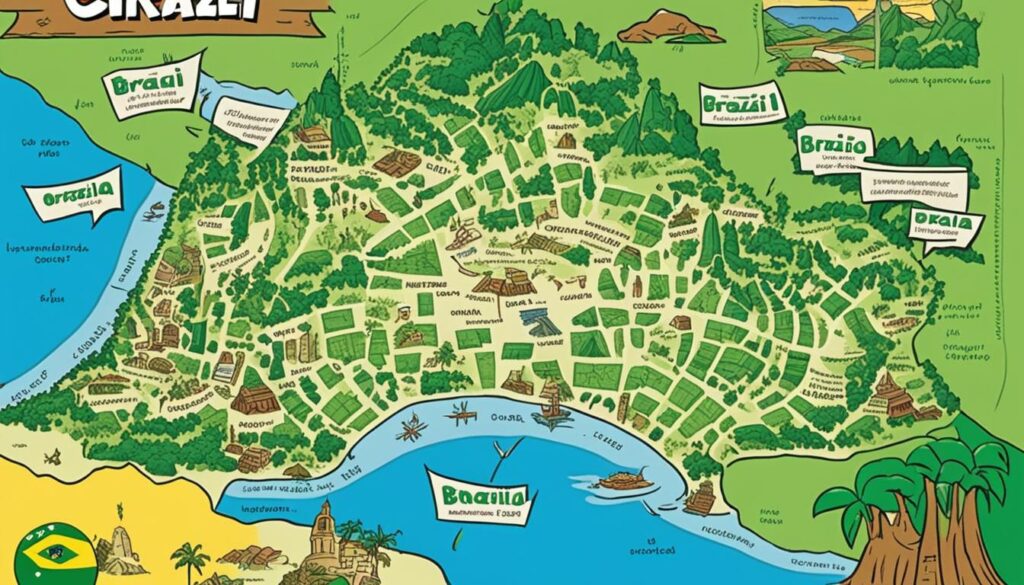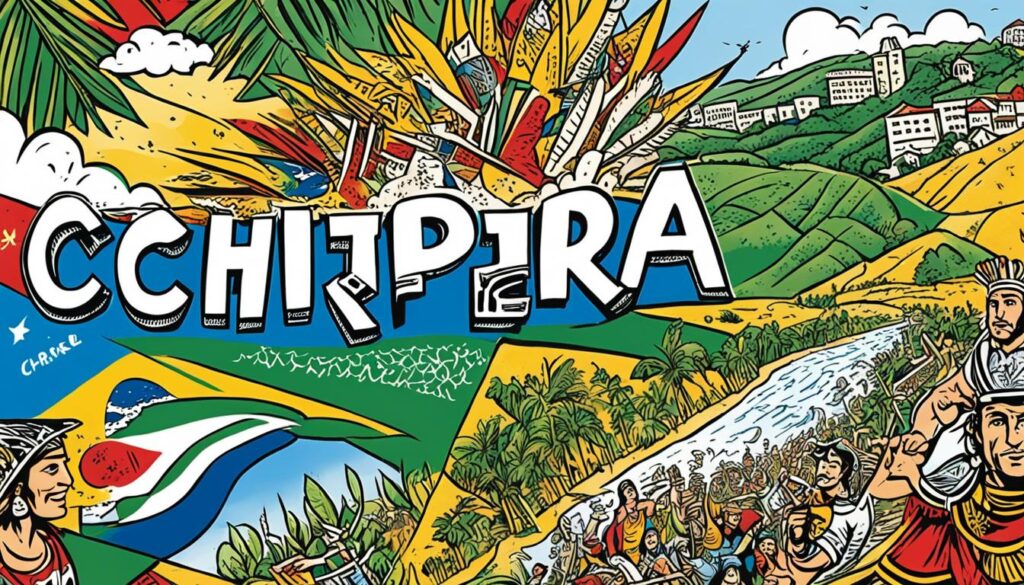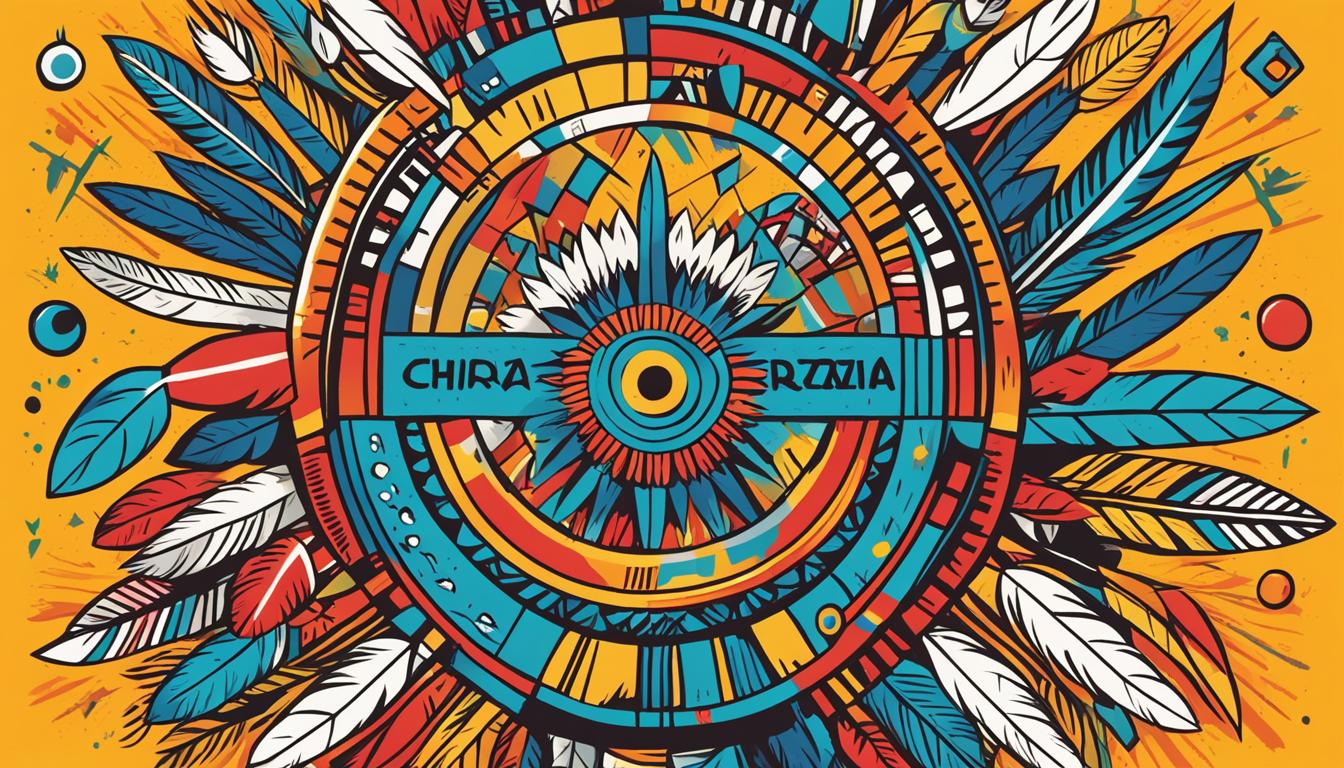Did you know that the Chiripá language, also known as Ava Guarani or Nhandéva, plays a crucial role in preserving Paraguay’s indigenous culture? With approximately 4,900 speakers in Brazil and 7,000 in Paraguay, this indigenous language is a testament to the rich linguistic heritage of South America.
The Chiripá community primarily resides in the mountainous areas of the Atlantic Forest, spanning from eastern Paraguay to the southern Brazilian states of Paraná, Santa Catarina, and Rio Grande do Sul. This vibrant language is closely connected to Mbyá Guaraní, and speakers of the two languages often intermarry, further strengthening the cultural significance of the Chiripá language.
In this article, we will explore the ethnicity and geographic distribution of the Chiripá people, delve into the phonology and vowel sounds that make the language unique, discuss its endangered status, and highlight the efforts being made to preserve and revitalize this vital part of Paraguay’s indigenous heritage. Join us on this journey to discover the beauty and significance of the Chiripá language.
Chiripá Language: Ethnicity and Native Speakers
The Chiripá language is spoken by the Ava Guarani or Nhandéva people, who are part of the Guaraní nation in South America. The Chiripá people are one of the tribes within this nation, and their language is considered a distinct variation of the Guarani language.
The native speakers of Chiripá are estimated to be around 16,350 individuals, based on data collected from 1995 to 2012. They belong to the Ava Guarani ethnic group and are found in various regions of Paraguay, Brazil, and Argentina.
The Chiripá language, being an indigenous language, plays a vital role in preserving the cultural heritage of the Ava Guarani people. It serves as an integral part of their identity, connecting them to their ancestors and fostering a strong sense of community.
“The Chiripá language is a symbol of our identity and our indigenous heritage. It holds the wisdom and stories passed down through generations, ensuring our cultural continuity.” – Elder from the Ava Guarani community.
The linguistic diversity of the Ava Guarani people, including their distinct Chiripá language, contributes to the richness of South American indigenous languages. The preservation and revitalization of Chiripá are essential for maintaining cultural diversity and celebrating the cultural heritage of the Ava Guarani ethnic group.
Native Speakers by Country:
| Country | Number of Native Speakers |
|---|---|
| Paraguay | 10,000 |
| Brazil | 5,000 |
| Argentina | 1,350 |
The Chiripá language has a strong connection to the Ava Guarani ethnicity, and its preservation is crucial for maintaining the cultural identity of the Chiripá community. Through language revitalization efforts and the dedication of native speakers, the Chiripá language continues to thrive as an integral part of indigenous culture in Paraguay, Brazil, and Argentina.
Chiripá Language: Geographic Distribution
The Chiripá language is an indigenous language predominantly spoken in the regions of Paraguay, Brazil, and Argentina. It plays a significant role in the linguistic landscape of these areas.
The Chiripá community primarily resides in the mountainous regions of the Atlantic Forest, which stretches from eastern Paraguay through the Misiones Province of Argentina and into the southern Brazilian states of Paraná, Santa Catarina, and Rio Grande do Sul.
Chiripá is deeply rooted in this geographic distribution, with the language being an integral part of the cultural fabric of these regions.

The Chiripá language holds great significance for the indigenous communities living in Paraguay, Brazil, and Argentina. Its geographic distribution and strong cultural ties make it an essential part of the linguistic diversity in these regions.
Chiripá Language in Other Regions
Besides the primary regions mentioned above, there are also Chiripá immigrants in other parts of Argentina who continue to speak the language, further contributing to its geographic reach.
Overall, the geographic distribution of the Chiripá language reflects its importance in preserving the indigenous cultural heritage of the Ava Guarani or Nhandéva people in South America.
Chiripá Language: Phonology and Vowel Sounds
The Chiripá language showcases a distinctive phonology system that contributes to its linguistic richness. A key aspect of the Chiripá language is its wide range of vowel sounds, which encompass various front, central, and back vowel sounds.
Front vowels such as /i/ and /ĩ/ create a forward placement of the tongue, while central vowels like /ɨ/ and /ɨ̃/ are produced with a neutral tongue position. The Chiripá language also incorporates back vowels like /u/ and /ũ/, which involve a retracted tongue position.
In addition to these vowel sounds, the Chiripá language includes open-mid vowels (/ɛ/ and /ɛ̃/) and open vowels (/a/ and /ã/) that further contribute to its phonetic diversity.
It’s important to note that certain vowel sounds in the Chiripá language may have alternate realizations in specific contexts. For instance, /ɛ, a, ɨ, and ɔ/ may be pronounced as [e, ɐ, ɯ, o]. This variation adds an intriguing dimension to the Chiripá phonology system.
Vowel Sounds in Chiripá Language:
| Vowel Sound | Representation |
|---|---|
| Front Vowels | /i/, /ĩ/ |
| Central Vowels | /ɨ/, /ɨ̃/ |
| Back Vowels | /u/, /ũ/ |
| Open-mid Vowels | /ɛ/, /ɛ̃/ |
| Open Vowels | /a/, /ã/ |
The Chiripá language’s unique phonology system, characterized by its diverse vowel sounds, enhances the linguistic tapestry of the Chiripá community. These vowel variations contribute to the intricate beauty and authenticity of the Chiripá language.
Chiripá Language: Consonants and Sonorant Sounds
The Chiripá language is characterized by a diverse range of consonant sounds, each contributing to its distinct phonetic characteristics. By understanding the consonant inventory, we can gain valuable insight into the linguistic richness of the Chiripá language.
The consonants in Chiripá include:
- Labial sounds: /p/, /b/, and /ᵐb/
- Alveolar sounds: /t/ and /n/
- Palatal sounds: /j/ and /ɲ/
- Velar sounds: /k/ and /kʷ/
- Glottal sounds: /ʔ/
Prenasal sounds, represented by /ᵐb/ and /ⁿd/, can also be realized as nasal sonorants [m] and [n] when followed by nasal vowels. This pronunciation variation adds further complexity and richness to the Chiripá language.
“The consonant and sonorant sounds in the Chiripá language contribute to its distinct phonetic characteristics and reflect the linguistic diversity of this indigenous language.”
The Sonorant Sounds
Within nasal syllables, the sonorant sounds /w/, /ɾ/, and /j/ are realized as nasalized sounds, namely, [w̃], [ɾ̃], and [j̃]. This nasalization of sonorant sounds further enhances the unique sound structure of the Chiripá language.
To better understand the phonetic complexities of the Chiripá language, let’s take a look at the table below, which summarizes the consonant and sonorant sounds in this indigenous language.
| Consonants | Labial | Alveolar | Palatal | Velar | Glottal |
|---|---|---|---|---|---|
| Plosive | /p/ | /t/ | /k/ | /ʔ/ | |
| Nasal | /m/ | /n/ | /ɲ/ | ||
| Fricative | |||||
| Approximant | /w/ | /j/ | |||
| Tap/Flap | /ɾ/ |
(Table: Consonant and Sonorant Sounds in the Chiripá Language)
“The consonant and sonorant sounds in the Chiripá language reflect the linguistic complexity and diversity of this indigenous language. The distinctive phonetic characteristics of Chiripá contribute to its rich cultural heritage.”

Chiripá Language: Endangered Status and Preservation Efforts
Like many indigenous languages, the Chiripá language is classified as endangered. Over the years, the number of Chiripá language speakers has been steadily declining, raising concerns about language loss and cultural erosion.
However, various efforts have been put forth to preserve and revitalize the Chiripá language. These initiatives encompass educational programs, language documentation projects, and intergenerational transmission promotion. The Chiripá community, along with numerous organizations and linguistic experts, is actively working towards safeguarding this invaluable part of Paraguay’s indigenous heritage.
The preservation efforts for the Chiripá language involve:
- Developing and implementing language revitalization programs to encourage the use of Chiripá in daily life and cultural practices.
- Recording and documenting Chiripá language and cultural knowledge to ensure its preservation for future generations.
- Establishing language nests and immersion programs where children and young learners can engage with native speakers and learn the Chiripá language in a natural environment.
- Collaborating with universities, research institutes, and language experts to analyze, document, and study the Chiripá language’s grammar, vocabulary, and linguistic features.
- Organizing community events, workshops, and gatherings that emphasize the importance of language preservation and celebrate the cultural richness associated with the Chiripá language.
These preservation efforts are crucial not only for the survival of the Chiripá language but also for the preservation of its associated cultural traditions, historical narratives, and community identity. By investing in the revitalization and protection of endangered languages like Chiripá, we can ensure the continued celebration and appreciation of linguistic diversity in Brazil and beyond.
Chiripá Language: Cultural Significance and Community Identity
The Chiripá language holds significant cultural importance for the Chiripá community and contributes to their strong sense of identity. It is intertwined with various aspects of their daily lives, playing a vital role in preserving their unique cultural heritage.
Traditional practices and rituals are deeply rooted in the Chiripá language, serving as a means of passing down cultural knowledge from one generation to the next. Through the language, stories of their ancestors are shared, enabling the preservation of historical narratives that connect the community to its past.
Moreover, the Chiripá language strengthens community bonds, as it is the primary mode of communication within the Chiripá community. It fosters a shared understanding and a sense of belonging among its speakers, reinforcing their collective identity and fostering a close-knit community.
The Chiripá language also plays a crucial role in social interactions, enabling the expression of emotions, thoughts, and values. It serves as a medium for expressing gratitude, sharing wisdom, and resolving conflicts within the community.
“The Chiripá language is not just a linguistic tool; it embodies our cultural values, traditions, and beliefs. It is the bridge that connects us to our ancestors, our community, and our heritage.”
Cultural Significance Highlights:
- Preserves historical narratives and cultural knowledge
- Strengthens community bonds and fosters a sense of belonging
- Enables expression of emotions, thoughts, and values
By recognizing the cultural significance of the Chiripá language, we can appreciate its role in maintaining the rich heritage of the Chiripá people. Efforts to preserve and revitalize the language not only ensure the survival of an indigenous language but also support the preservation of Chiripá’s cultural traditions and community identity.
| Significance | Cultural Contribution |
|---|---|
| Preservation of Historical Narratives | Ensures the transmission of cultural knowledge and ancestral stories |
| Community Identity | Strengthens the sense of belonging, fostering unity within the Chiripá community |
| Expression of Cultural Values | Facilitates the communication of emotions, thoughts, and cultural values |

Conclusion
The Chiripá language, spoken by the Ava Guarani or Nhandéva people in Paraguay, Brazil, and Argentina, is an indigenous language that holds immense cultural significance. With its unique phonology and a diverse range of vowel and consonant sounds, the Chiripá language is a vital component of Paraguay’s indigenous culture and identity.
Unfortunately, like many indigenous languages, the Chiripá language is endangered. The number of speakers has been dwindling over the years, posing a threat to the preservation of this linguistic heritage. However, efforts are being made to protect and revitalize the Chiripá language through educational programs and community initiatives.
Recognizing the importance of indigenous languages like Chiripá is crucial for the preservation of cultural diversity and the safeguarding of endangered languages. The Chiripá language not only represents the linguistic heritage of the Ava Guarani people but also contributes to the rich tapestry of South American languages. By investing in cultural preservation and language revitalization, we can ensure that future generations can continue to celebrate and cherish the Chiripá language and its profound cultural significance.
FAQ
What is the Chiripá language?
The Chiripá language, also known as Ava Guarani or Nhandéva, is a Guaraní language spoken in Paraguay, Brazil, and Argentina. It is closely connected to Mbyá Guaraní.
Who are the native speakers of the Chiripá language?
The Chiripá language is spoken by the Ava Guarani or Nhandéva people, who are part of the Guaraní nation in South America.
Where is the Chiripá language primarily spoken?
The Chiripá community primarily resides in the mountainous areas of the Atlantic Forest, spanning from eastern Paraguay to the southern Brazilian states of Paraná, Santa Catarina, and Rio Grande do Sul.
What are the vowel sounds in the Chiripá language?
The Chiripá language has a unique range of vowel sounds, including front vowels, central vowels, back vowels, open-mid vowels, and open vowels.
What are the consonant sounds in the Chiripá language?
The Chiripá language has a variety of consonant sounds, including labial sounds, alveolar sounds, palatal sounds, velar sounds, and glottal sounds.
Is the Chiripá language endangered?
Yes, like many indigenous languages, the Chiripá language is classified as endangered. Efforts are being made to preserve and revitalize the language through educational programs and community initiatives.
What is the cultural significance of the Chiripá language?
The Chiripá language is intertwined with various aspects of the community’s daily life, including traditional practices, storytelling, rituals, and social interactions. It plays a crucial role in preserving cultural knowledge and strengthening community bonds.
How can the Chiripá language be preserved?
Preservation efforts for the Chiripá language include educational programs, language documentation projects, and initiatives to promote intergenerational transmission.
What is the importance of preserving indigenous languages like Chiripá?
Preserving indigenous languages like Chiripá is crucial for maintaining cultural diversity and heritage. These languages hold valuable knowledge and contribute to the identity of indigenous communities.
